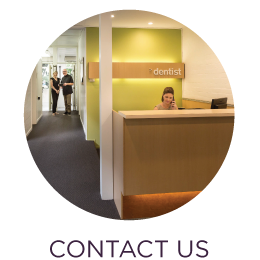
Children’s Dentistry
First Visit For Toddlers
At Canterbury Family Dental we welcome young children with a safe and secure entertainment area in our reception.
We believe a dental appointment should be a positive experience. If your child is brought in from an early age, will endeavour to ensure that it is!
We recommend bringing your child in to watch an older sibling or their parent have an examination first. This desensitises your child to the sounds and smells of the dental office. Then when it is their turn they will already be familiar with the environment.
A simple examination should be all that is needed and this should be talked about beforehand as a positive experience. The more positive experiences your child can have at the dentist, the better.
The Importance of Baby Teeth
Your child should have 20 baby teeth by the age of two-and-a half. Baby teeth are important for speech development and although these teeth will fall out naturally, premature childhood tooth loss will have a significant impact on the alignment of the adult teeth.
The baby teeth are positioned in such a way so as to ensure their permanent adult successors come through in the correct alignment.
The following are critical to maintaining the baby teeth:
- Proper brushing.
- Flossing.
- A healthy diet.
Remember, the back baby molars need to last until your child is a teenager!
Many children (and their parents) feel they are capable of brushing and flossing their teeth alone, but help from a parent or carer is important until your child turns 10 years old. Up to this age, you child lacks the manual dexterity required to effectively clean all the tooth surfaces and parental assistance will prove invaluable.
Fissure Sealants
Prevention is better than cure and this also holds true for tooth decay. Fissure sealant is frequently used to prevent tooth decay in those hard to reach places or in deep grooves which are susceptible to a build up of plaque.
The sealant is a tooth coloured resin coating and is usually placed on adult molars soon after they present themselves, around the age of 6 years.
In this simple procedure the sealant is painted onto the biting surfaces of molars. It is hardened using a concentrated beam of ultraviolet light making a permanent protective covering which remains in place for years.
Orthodontics
A discrepancy between tooth size and jaw size may push your child’s teeth out of alignment.
Dr. Andrew Langton-Joy works in collaboration with local specialists to prescribe the most appropriate treatment for your child to minimise the amount of time they undergo orthodontic treatment.
If you are concerned about the positioning of your child’s teeth, schedule an obligation free assessment today.
Why should I straighten mine/my children’s teeth?
1. Healthier teeth and gums
Correctly aligned teeth are easier to brush, floss and allow saliva to flow freely between teeth reducing the risk of cavities and gum disease.
2. Reduced risk of abnormal wear
Allowing the top and bottom jaws to meet properly with properly aligned teeth enables correct chewing. This reduces stress on the teeth which can stop them from cracking and wearing out.
3. Prevent damage to the jaw joints
Proper bite and alignment prevents the wearing out of jaw joints and damage to the bone surfaces. It also eliminates the headache and pain that is associated with improper bite.
When wearing braces, patients need to be extra vigilant with their oral hygiene. Regular brushing, flossing and dental visits are advised to keep teeth and gums healthy.
A healthy, balanced diet is also important to maintain a healthy mouth and patients may be advised to avoid certain foods that could get stuck in the braces (eg chewing gum or toffees).








